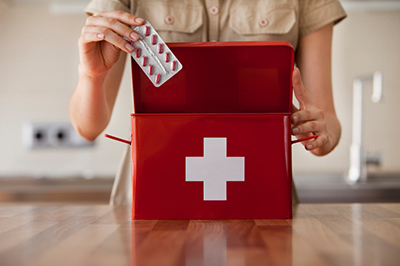 A problem that is often encountered by travellers nowadays relates to carrying medications for their personal use on board. This problem is often prompted when there is a news headline describing travellers who have been fined or imprisoned for being found in possession of medicines that are prohibited in their country of destination. Actually, travelling with medication does not have to be a hassle. Travellers can avoid that scenario with careful planning and packing of their medications.
A problem that is often encountered by travellers nowadays relates to carrying medications for their personal use on board. This problem is often prompted when there is a news headline describing travellers who have been fined or imprisoned for being found in possession of medicines that are prohibited in their country of destination. Actually, travelling with medication does not have to be a hassle. Travellers can avoid that scenario with careful planning and packing of their medications.
Prescription medications are allowed in both carry-on and checked baggage. However, it is recommended to carry essential medication in carry-on luggage for immediate access in case of delay or loss of baggage. The prescription medication should be with the original packaging and clearly labelled with the name of the passenger. The passenger is required to carry a copy of the prescription from doctor in his carry-on luggage. It is also recommended that passengers provide a doctor’s letter or other necessary documents verifying the name and type of medication being carried with prescribed doses in case of any doubt. Besides prescription medication, a reasonable amount of non-prescription medication for travelling is also allowed if it is in its original container. It not permissible to combine different types of medications into one bottle or container.
Apart from that, some prescribed medications are controlled substances that are restricted under the Misuse of Drugs Legislation. Two classes of medications, narcotics and psychotropics, are considered as controlled substance and they are under the purview of international law. These controlled drugs can have an effect on the Central Nervous System (CNS) and have potential to be abused. Examples of narcotic drugs are morphine and codeine. They are analgesic opioids that are tend to be strictly regulated. Psychotropic substances include those medications likely to be used as mental disorder treatment such as depression, anxiety and psychotic conditions. For instance, zolpidem is consider as psychotropic medication.
Some countries also include medications that are used to treat neurological conditions such as Parkinson’s disease and epilepsy to their regulated list. Thus, passengers can check with the local Embassy of destination to ensure all the medications being carried are not prohibited. However, passengers are still allowed to carry controlled substances with them if they have a medical letter or prescription from their doctor which confirms the legal authority of the passenger to possess for personal use. Some countries may require the passenger to obtain a certificate issued or a permit issued by a competent authority in the country of destination. The quantity of controlled substances that can be carried by passengers for personal use is usually up to one month. A longer period may still be acceptable for travellers treated with psychotropic substances used as anticonvulsant agents.
Passengers are allowed to carry medication in liquids (syrup, mixture, insulin, eye drops), cream, lotion, gels and aerosol (metered-dose inhaler, nasal spray) on board. However, the containers of those medications should not more than 100 millilitres each and to be placed in one standard transparent re-sealable plastic bag with a maximum capacity of not more than 1 litre. Larger containers that are partially full are not permitted. In the other words, other extra medication in liquids, gel or aerosols must be kept in their checked in baggage instead of carry-on luggage. Medication needs to be stored at room temperature or below. Hence, it is important for passengers to get some recommendations from pharmacist on safe storage of medications as extreme heat or cold impacts the medicine’s effectiveness. To keep insulin at the right temperature, the passenger may need to bring along ice packs, a cool bag or insulated pouch for storage as the on-board fridge cannot be used to keep medication cold.
Michelle Lim Bee Ping is a pharmacist working in Melaka.
References:
- International Narcotics Control Board (INCB), 2003. Guidelines for National Regulations Concerning Travellers under Treatment with Internationally Controlled Drugs. [online] Available at: http://www.incb.org/documents/Psychotropics/guidelines/travel regulations/Intl_guidelines_travell_study/12-57111_ENG_Ebook.pdf [Accessed 1 April 2015]
- Melissa Conrad Stöppler, 2015. Flying with the Greatest of Ease – Carry-On Baggage Tips. [online] Available at: http://www.medicinenet.com/script/main/art.asp?articlekey=63470&pf=2 [Accessed 30 March 2015]
- Goodyer L, 2012. What You Need To Know About Travelling With Medications. [online] Available at: https://www.iamat.org/blog/what-you-need-to-know-about-travelling-with-medications/ [Accessed 30 March 2015]
- Malaysia Airports, (2015). Liquids, Aerosold, Gels (LAGs). . [online] Available at: http://www.klia.com.my/?m=airport&c=passenger_guide&id=1 [Accessed 30 March 2015
[This article belongs to The Malaysian Medical Gazette. Any republication (online or offline) without written permission from The Malaysian Medical Gazette is prohibited.]
